7 Best Jumping Jack Variations (with Pictures!)
The jumping jack is an ever-popular form of bodyweight exercise that is surprisingly underutilized as far as its variations go.
While the conventional jumping jack is the most popular form of jack - exercises like the burpee or high knee jumping jack can help further the development of muscles otherwise ignored by the former variant.
Practically any bodyweight exercise can be turned into a jumping jack variation by jumping the legs out during the repetition. The plank jack and push-up jack are two excellent examples of this, as they retain the benefits of both their namesake exercise and jumping jacks.
What are Jumping Jacks?
In technical terms, the regular jumping jack can be classified as an open chain aerobic compound exercise of relatively high impact and a low barrier of entry.
Jumping jacks are performed for a wide variety of purposes, but most often for expending calories and improving aerobic fitness while simultaneously training certain muscle groups in the lower body.
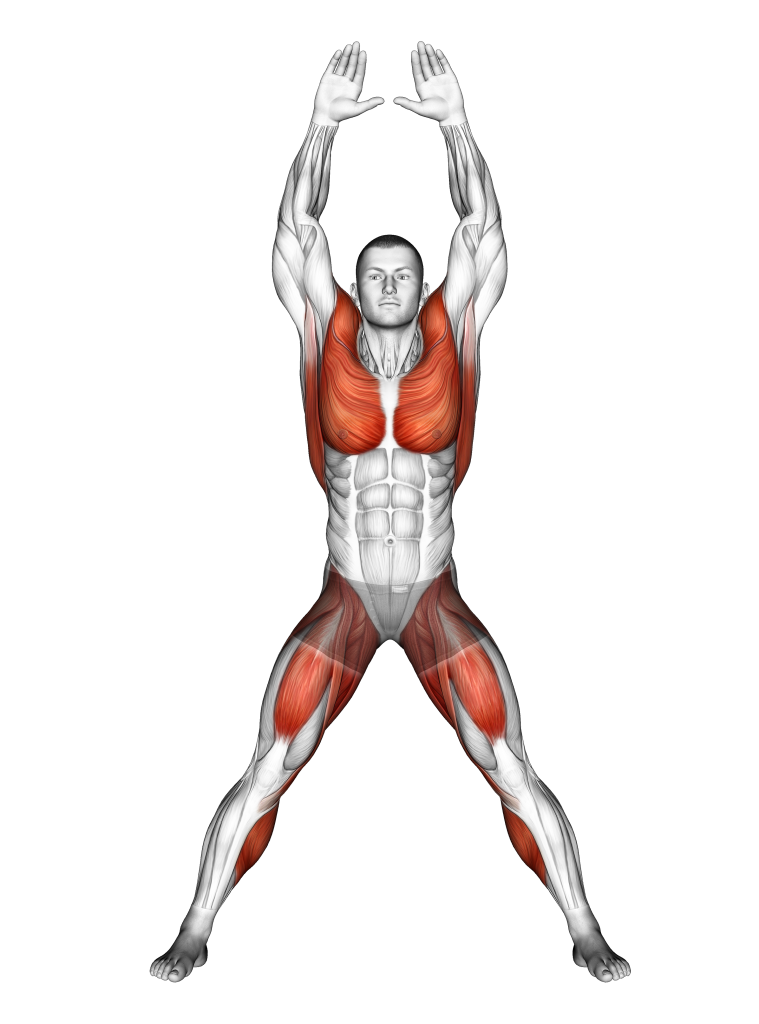
The majority of jumping jack variations will simply add the characteristic “jack” motion into an otherwise ordinary bodyweight exercise. A good example of this is the plank jack, which involves the exerciser spreading and narrowing their legs while in a conventional plank position.
This inclusion of a jack motion into seemingly unrelated exercises allows for greater core contraction, caloric expenditure and the inclusion of aerobic training stimulus in an otherwise anaerobic exercise.
Jumping Jack Variations
1. The Regular Jumping Jack
Otherwise just called “jumping jacks” or “star jumps” - the regular variation is the most basic form of jumping jack, although not the lowest impact or easiest.
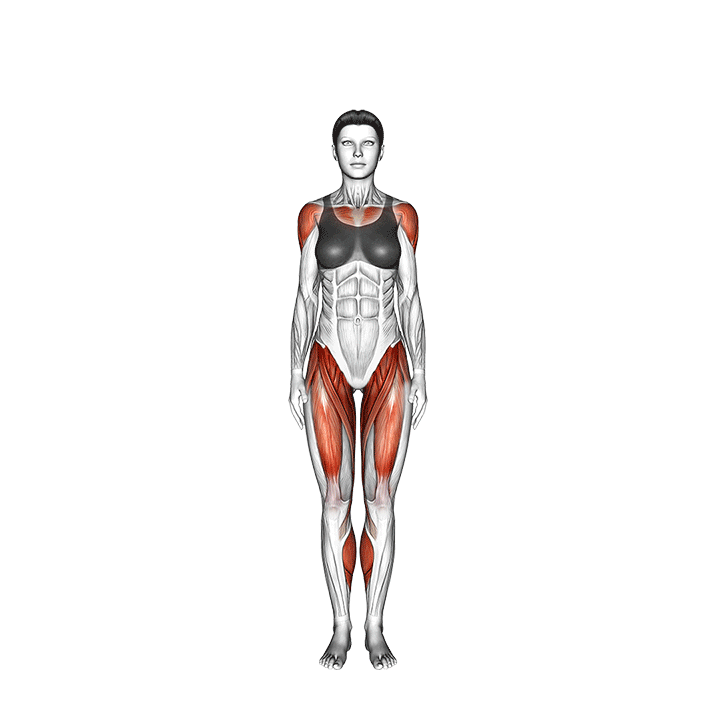
Regular jumping jacks involve the exerciser jumping into a wide stance with their arms swinging overhead. This is then reversed so as to reset the movement. Often, exercisers will repeat this motion for an extended period so as to invigorate the circulatory system and achieve ideal training intensity.
Like most other jumping jack variations, the regular kind is performed unweighted and is classified as a multi-joint aerobic movement.
These characteristics allow it to be used as both a main source of training intensity or otherwise as a warm-up prior to more complex exercises.
Muscles Worked
Jumping jacks activate practically every muscle found in the body. However, not all are recruited to the same extent.
The main muscles targeted by jumping jacks are the quadriceps femoris, the calves muscle group, the deltoids, the hip flexors and the glutes.
Muscles used as stabilizers are the entire core, hamstrings, trapezius and pectorals.
Benefits as a Jumping Jack Variation
Apart from burning calories and building cardiovascular fitness, jumping jacks are excellent for developing explosiveness and power throughout the body.
This can be a boon for functional fitness enthusiasts and athletes, as improved rate of force production alongside greater aerobic endurance equates to far greater performance.
In addition, depending on the tempo in which the jumping jacks are performed, the exercise can function as a warm-up movement, a primary exercise or even as a cool-off tool at the end of a workout.
How-to:
To perform a jumping jack, the exerciser will first begin in a standing stance with their feet set hip-width apart. The arms should be kept loosely at the sides during the start of the repetition.
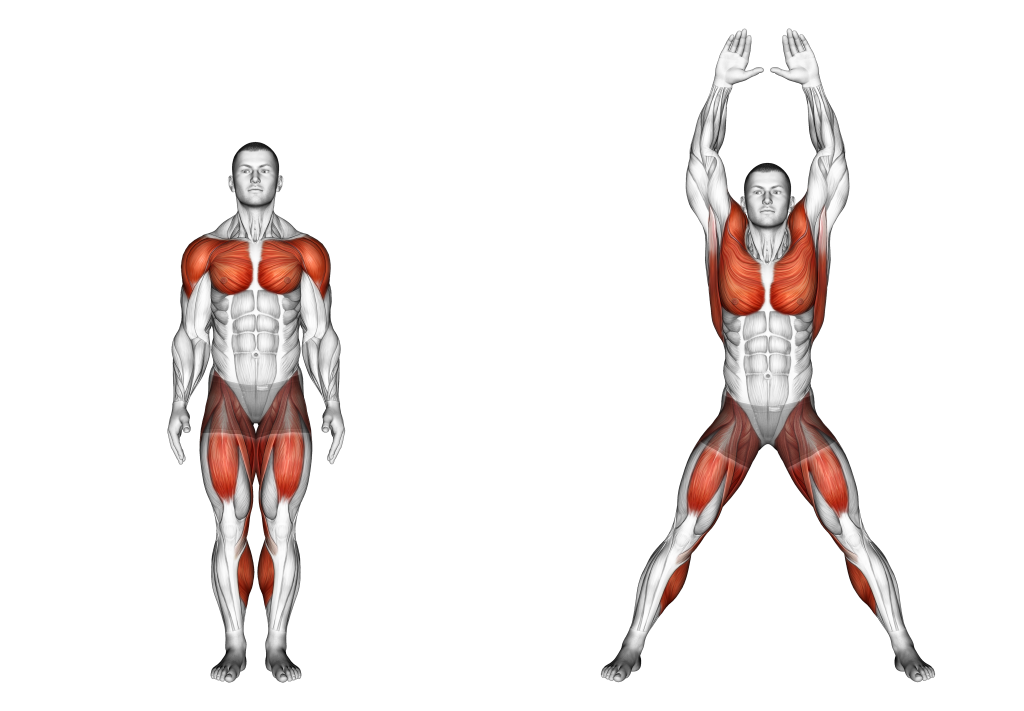
From this stance, the exerciser simultaneously leaps upwards and raises their arms in an arc over their head, spreading their legs so that they land with the feet a wider distance apart.
With the legs now spread and the arms overhead, the exercise completes the jumping jack by drawing their legs together and lowering their arms back down, replicating their starting position.
2. The Low Impact Jack
Also mistakenly called half jacks, the low impact jack is simply a regular jumping jack without the upward jumping motion. Instead, the exerciser simply steps both legs out to the sides, keeping the knees bent.
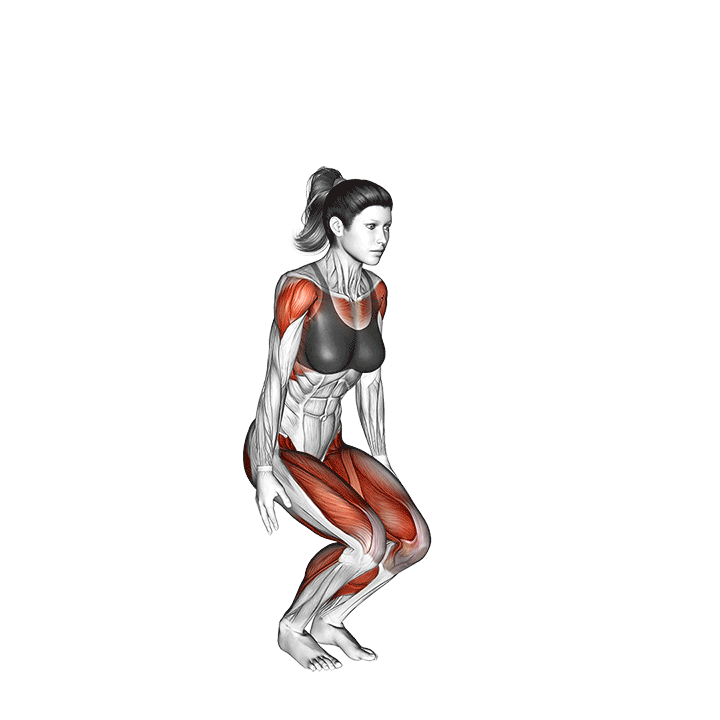
This reduction in force output reduces the involvement of muscles like the glutes and hamstrings, but greatly reduces the exercise’s impact on the joints.
The low impact jack is ideal for individuals recovering from a previous injury, those with poor bone density or for athletes that already engage in a significant amount of high-impact activity.
Muscles Worked
The low impact jumping jack primarily targets the quadriceps and calves. In the upper body, the trapezius and deltoids are the main sources of movement for the arms.
Of course, the core, trapezius and pectorals are still used as stabilizer muscles.
Benefits as a Jumping Jack Variation
Apart from being less impactful on the joints, the low impact jumping jack also features a slightly lower risk of injury as the exerciser can maintain a proper knee tracking angle. This creates more of a squatting motion than would be used in a conventional jumping jack.
How-to:
To perform this jumping jack variation, the exerciser begins by standing upright with the feet around hip-width apart and the arms loose at the sides.
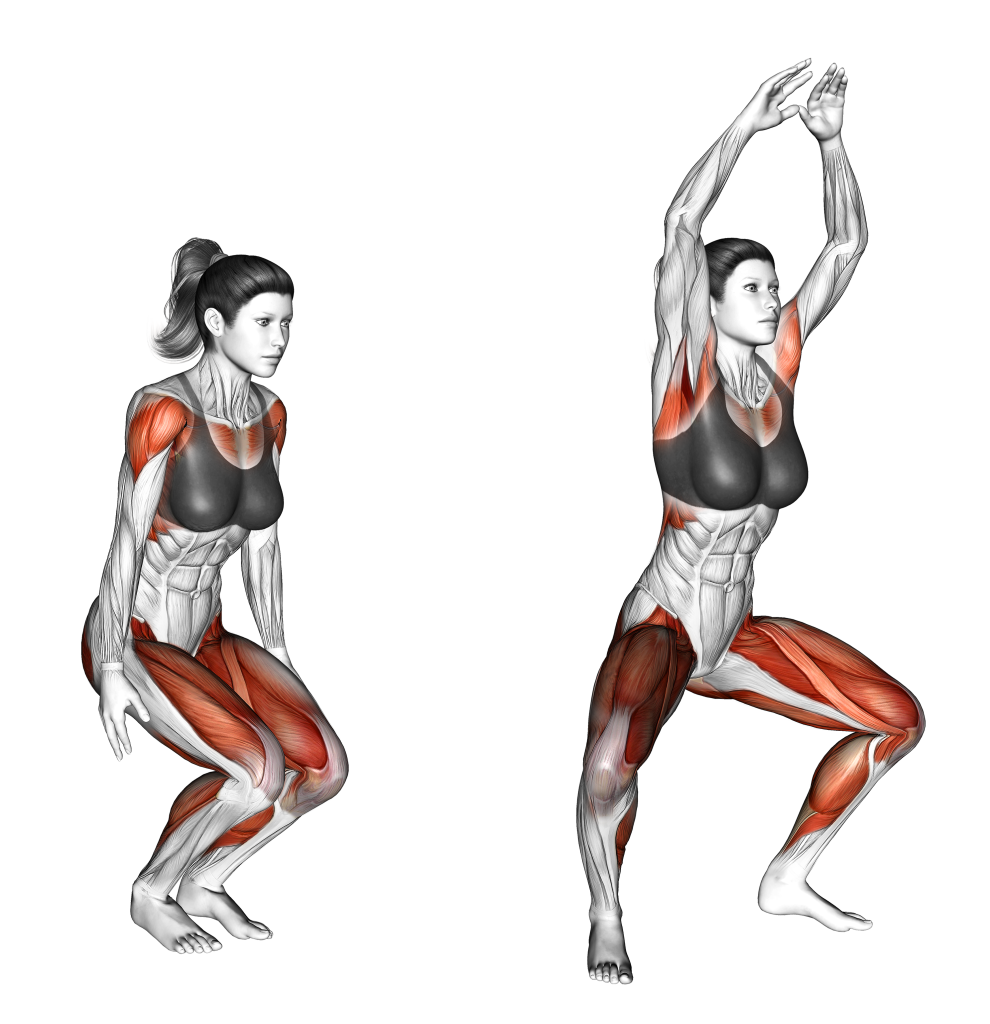
Then, simultaneously, they will step both feet out to the sides with the knees slightly bent and aligned with the toes. As they do this, the arms should be raised out to the sides and upwards over their head.
Once both feet are spread wider than the original position, the exerciser lowers their arms and draws their legs back together. This completes the repetition.
3. The Burpee Jumping Jack
The burpee jumping jack is the combination of two highly effective bodyweight exercises into a single fluid movement.
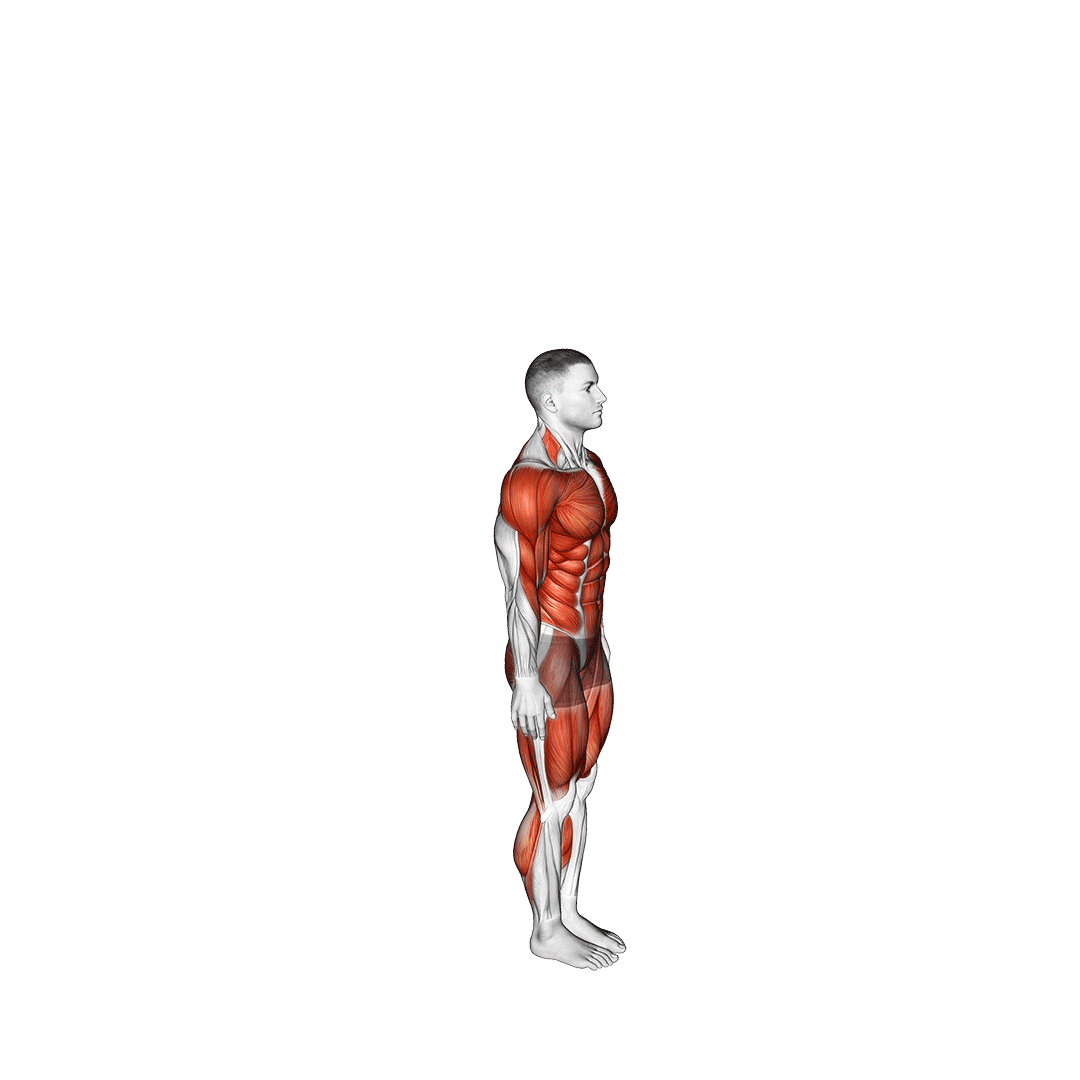
The exercise begins in much the same manner as a conventional jumping jack, but then follows up with the performer dropping into a plank stance by hinging forwards and kicking their feet back - replicating the movement of a burpee.
While considerably more complex and taxing, the burpee jumping jack is excellent for improving upper body involvement in what is otherwise a primarily lower body exercise.
Muscles Worked
The burpee jumping jack targets much the same muscles as conventional jumping jacks, only to a greater extent. This means the glutes, calves, hip flexors and quadriceps are all targeted alongside the deltoids.
In addition, because of the inclusion of a plank stance, the core and pectoral muscles are isometrically recruited to an even greater degree than with conventional jumping jacks.
Benefits as a Jumping Jack Variation
Burpee jumping jacks are more intense than their regular counterpart, meaning more calories are burned with each repetition and greater development can be attained in a shorter span of time.
Discounting its greater intensity, burpee jumping jacks also offer the benefit of being a far more effective core training exercise than most other jumping jack variations.
How-to:
To perform a burpee jumping jack, the exerciser begins in a standing stance with their feet around hip-width apart and their arms at their sides.

From this stance, they will initiate a regular jumping jack by jumping into the air, raising their arms overhead and landing with the feet wider than before.
Having completed the initial half of a jumping jack, the exerciser then steps their feet together and hinges forwards at the hips, extending their arms so as to support the torso as it is oriented horizontally.
With the hands flat on the floor, the exerciser kicks their feet back so as to form a plank stance.
Now in a plank stance, they will squeeze their core and explosively move their feet apart, torso and arms still stationary.
Reverse this motion back into a standard plank stance before kicking the feet forwards and rising back into a standing position. At this point, the repetition is complete.
4. The High Knee Jumping Jack
Combining the highly aerobic high knee exercise with jumping jacks creates an exercise of considerable intensity and cardiovascular benefit.
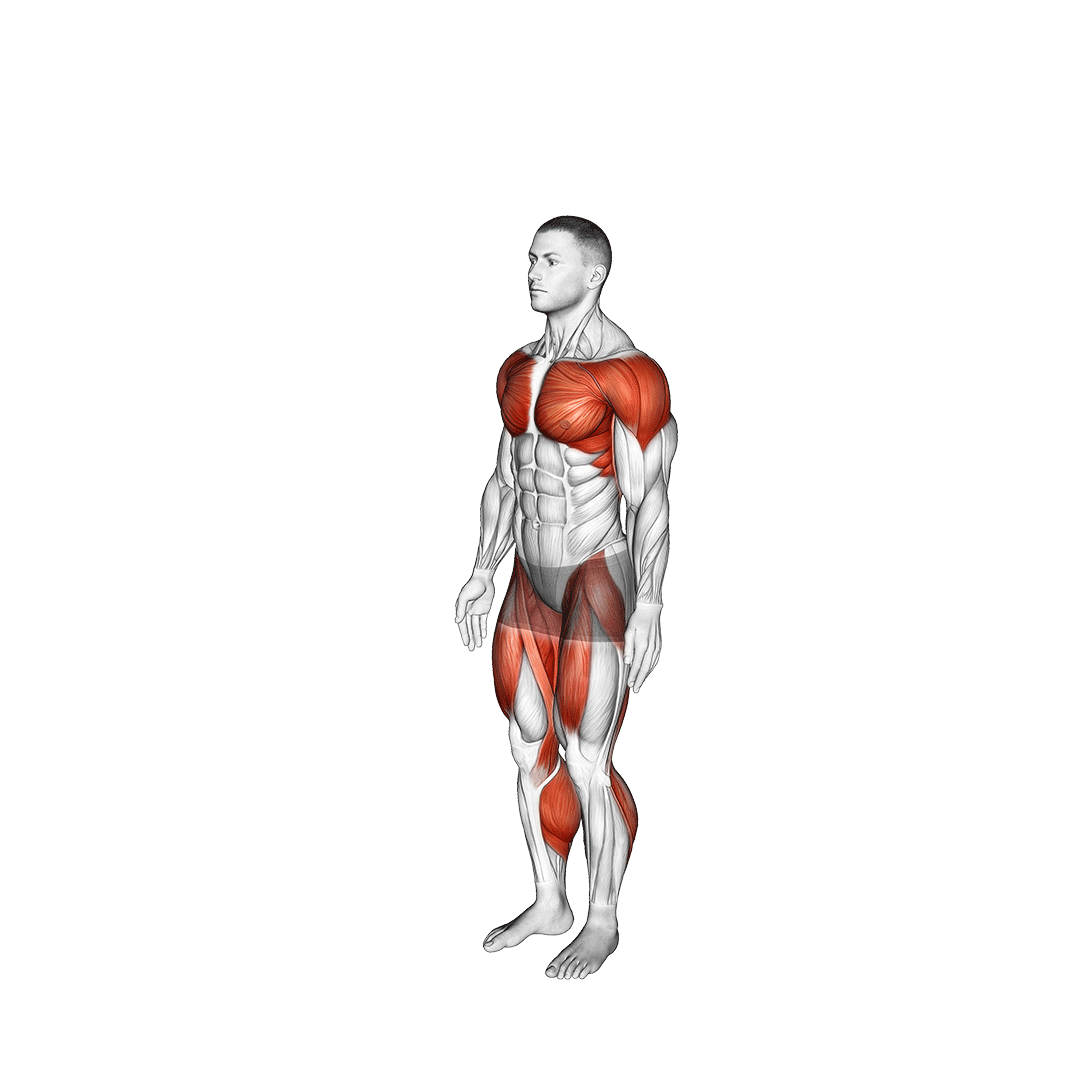
While this particular variation begins in much the same manner as a regular jumping jack, rather than ending with the feet together, the exerciser will continue by performing several alternating high knees.
The addition of high knees alongside regular jumping jacks creates a greater emphasis on the lower posterior chain, and burns significantly more calories than jumping jacks alone.
Muscles Worked
The high knee jumping jack will target the glutes and hamstrings in equal intensity to the quadriceps. In addition, the deltoids will aid with raising the arms.
Alongside these mover muscles are the core, calves, trapezius and pectorals - all of which are used in a static capacity.
Benefits as a Jumping Jack Variation
High knee jumping jacks burn more calories, better stimulate the cardiovascular system and build coordination to a greater degree than most other forms of jumping jack. For the best results, perform the entire exercise in as rapid a manner as possible.
How-to:
Performing high knee jumping jacks is simply doing a set of high knees after a regular jumping jack.

To do so, the exerciser begins in a standing position with their arms at their sides, feet around hip-width apart. From this stance, they will jump upwards, spread their legs and raise their arms over their head simultaneously.
Landing in a wide stance, the exerciser then narrows their feet back to their original width while once again lowering their arms.
Now back in their original stance, the exerciser proceeds to raise one knee upwards as the foot leaves the floor, raising the knee above knee height.
Lowering the leg back down, they then repeat the motion with the opposite side, continuing to alternate between their two legs until both sides have been raised 4-6 times.
Once complete, the repetition is considered finished.
5. The Squat Jack
The squat jack is a unique jumping jack variation where the exerciser remains in a half squat position throughout the entire set.
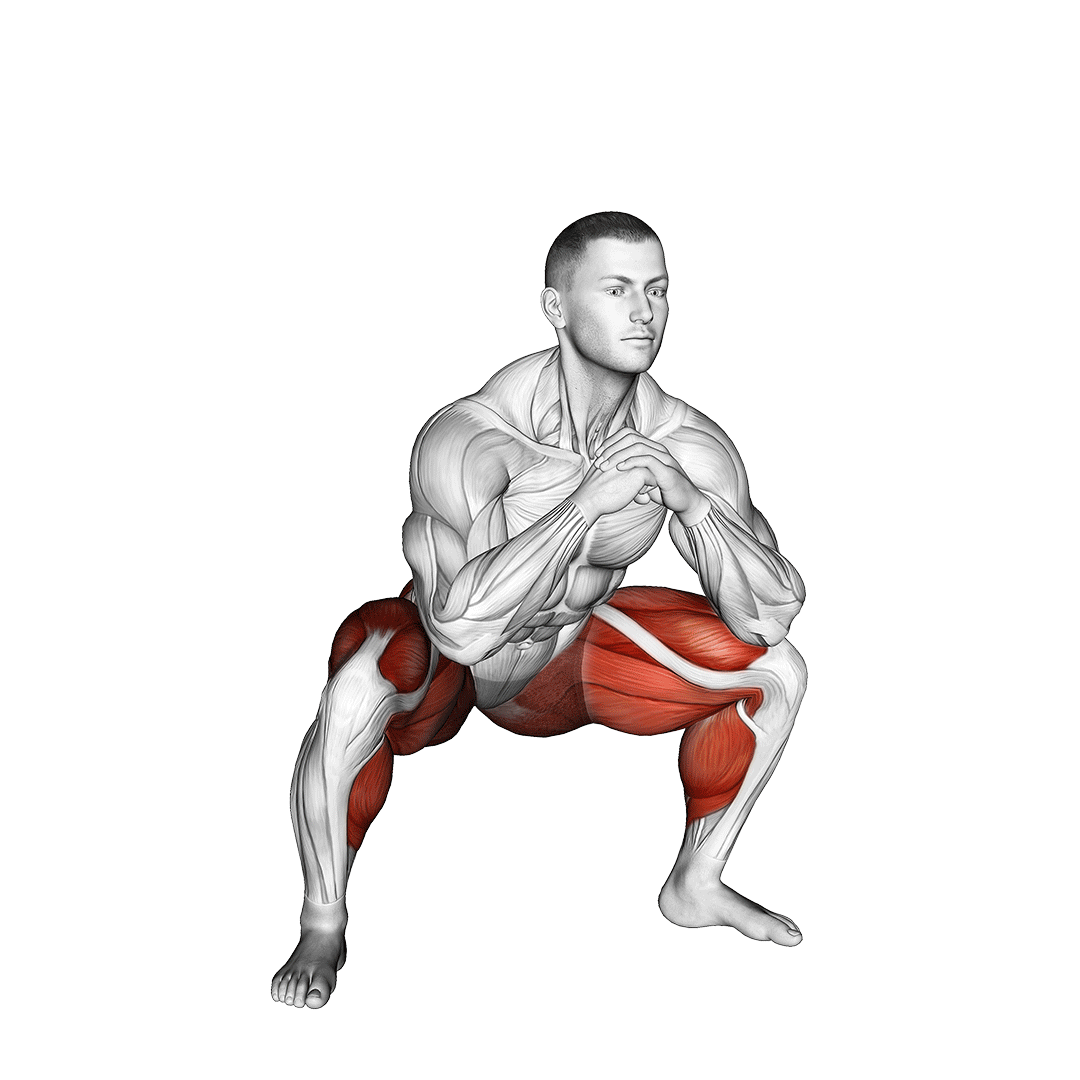
While they are in this half squat stance, they will jump the legs laterally, targeting the adductor and abductor muscles to a highly effective degree but eliminating the upper body as well.
Squat jacks are primarily used as a method of rapidly burning calories and increasing heart rate, and can be performed in a manner far more rapid than conventional jumping jacks.
Muscles Worked
Squat jacks primarily target the calves, adductors and abductors. In addition, the remaining muscles of the glutes and quadriceps are also recruited.
Benefits as a Jumping Jack Variation
The main benefit of squat jacks is derived from its more rapid tempo and relatively shorter range of motion.
This allows for more repetitions to be performed within a short time frame, upping intensity and working the cardiovascular system to a greater degree. Of course, a higher heart rate and more rapid movement pattern equates to more calories burned as well.
How-to:
To perform a squat jack, the exerciser will sink into a half squat stance by setting their feet wider than hip-width apart, bending the knees and pushing their hips back. The arms should be raised forwards so as to avoid hitting them with the legs.
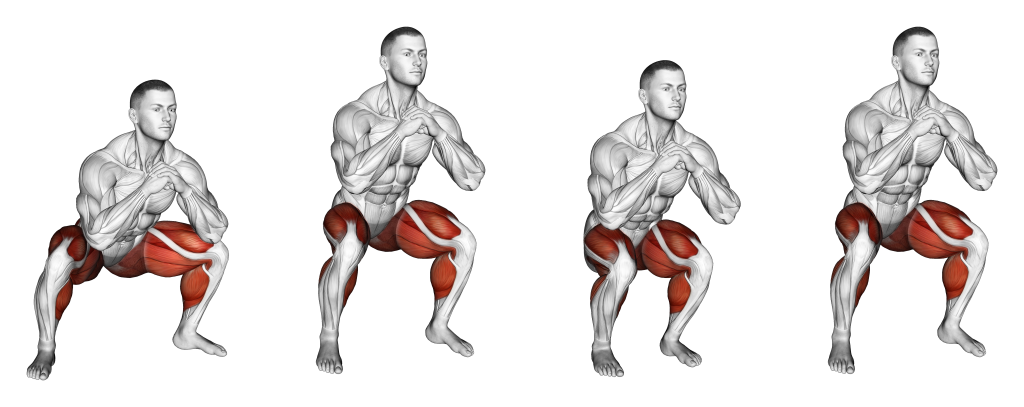
Now in a half squat stance, the exerciser will simply hop their feet wider apart before immediately jumping them back to their original position. All the while, the half squat stance should be maintained.
Repeat this movement while remaining in the same stance as many times as needed.
6. The Plank Stance Jack
Like squat jacks, the plank stance jack is somewhat more stationary than regular jumping jacks by keeping the upper body static throughout the set. In this case, the exercise is performed while remaining in a plank stance.
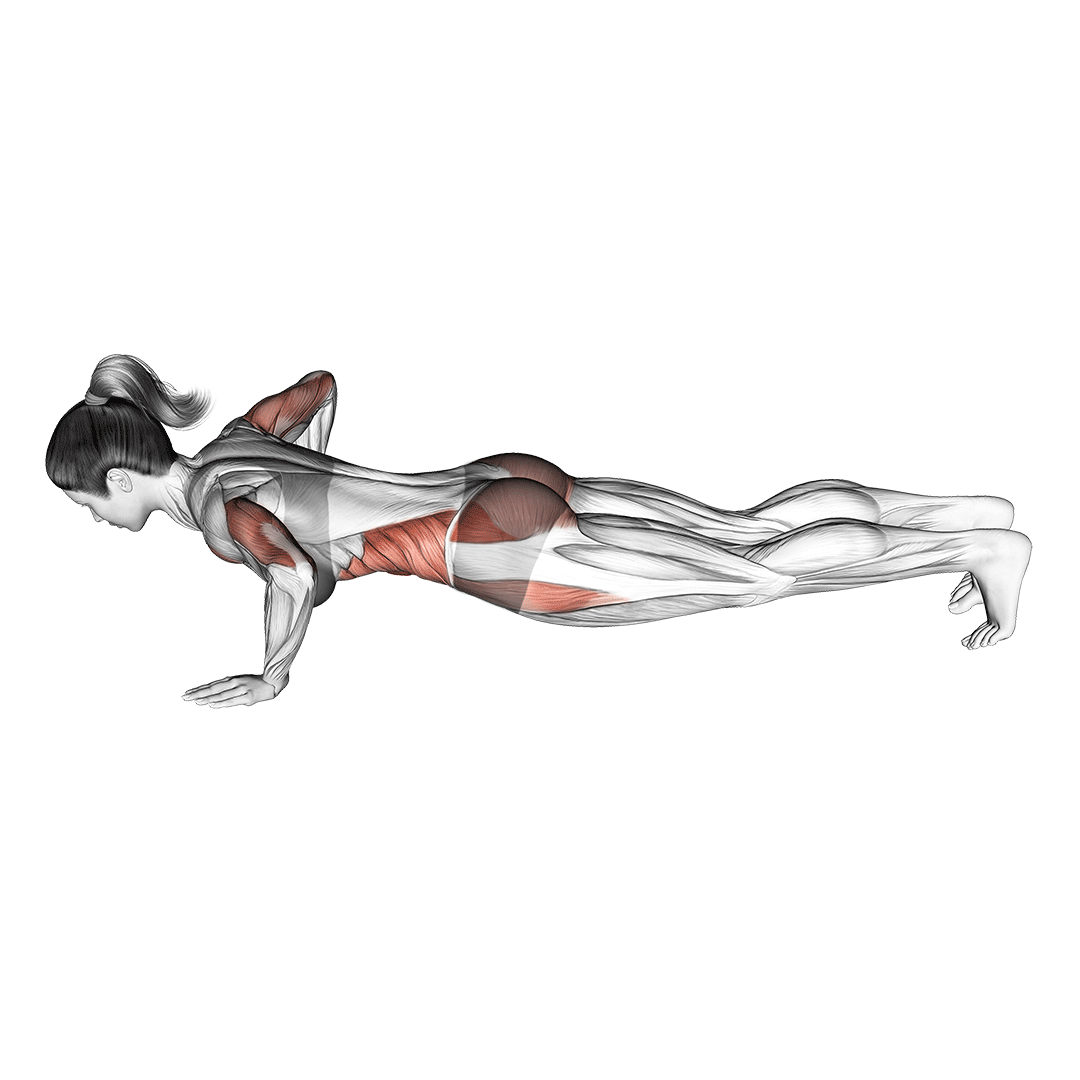
Plank stance jacks involve the exerciser keeping their torso suspended over the ground as they repeatedly widen and narrow their legs, working the core to a highly intense level while reducing dynamic recruitment of the lower body.
Muscles Worked
Plank jacks primarily target the core and adductor muscles, but will also isometrically correct muscles like the glutes, deltoids, serratus and triceps.
Benefits as a Jumping Jack Variation
The main benefit to doing plank jacks is its capacity to target the core muscles - exceeding even that of conventional planks.
Because of how intensely plank jacks work the core, novice or intermediate level exercisers will likely not be able to perform them for an extended period. In such cases, use plank jacks as a finishing core exercise.
How-to:
To perform a plank jack, the exerciser will assume a standard plank position by assuming all fours with their core braced and their palms shoulder-width apart on the ground.

Ensuring the glutes are squeezed and the core contracted, the exerciser then rapidly steps both feet wider apart, keeping the upper body stationary as they do so.
With the feet now further apart, the exerciser rapidly narrows them back to their original width. Repeat this movement rapidly for as many times as needed.
7. The Push-Up Jack
The push-up jack is exactly as it sounds - a conventional push-up performed with the addition of a jack motion with the legs after rising off the floor.
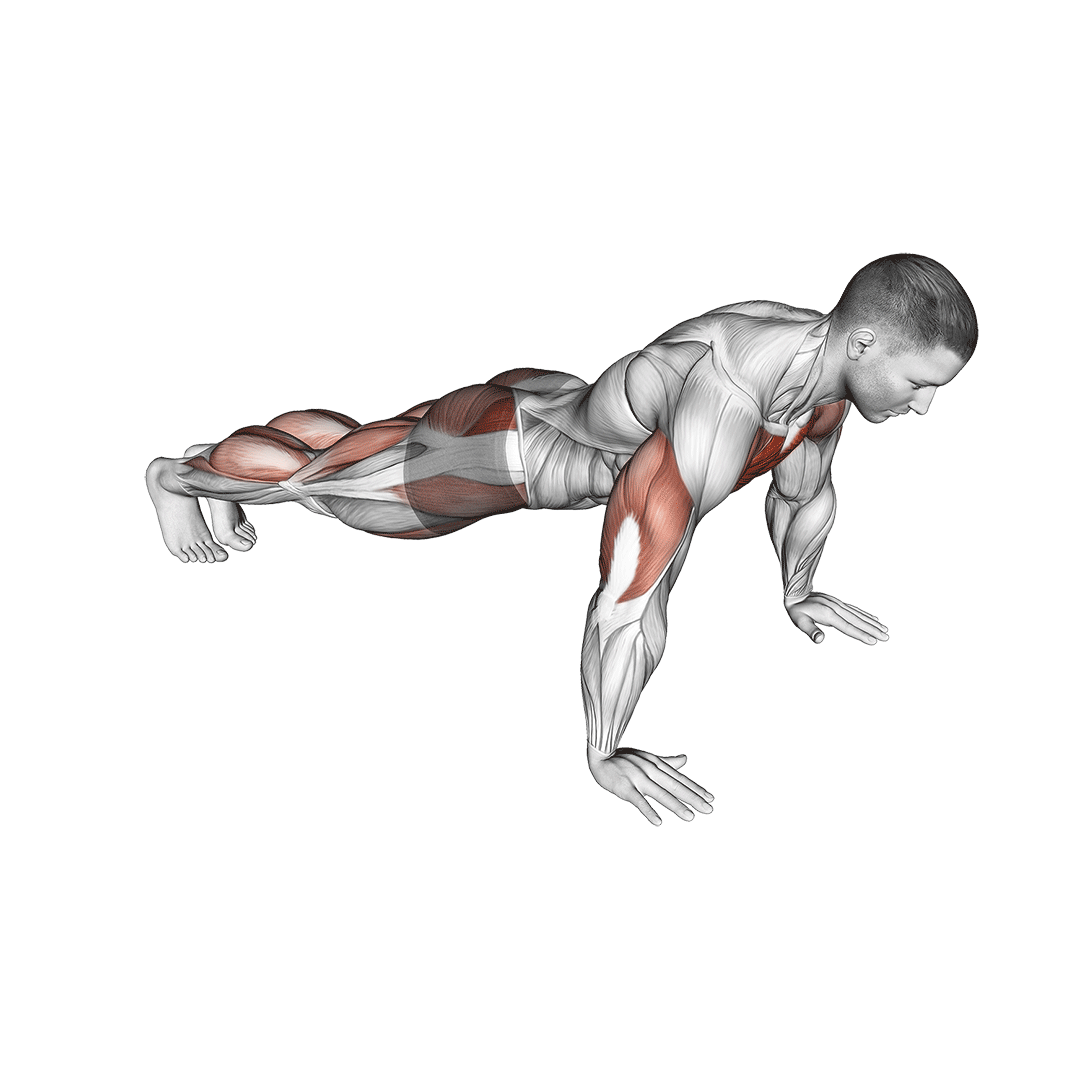
Unlike conventional jumping jacks where the upper body is largely ignored, push-up jacks emphasize these upper body muscles to a significantly greater degree, featuring comparatively less usage of the leg’s musculature.
Push-up jacks can also be considered a more intense version of plank jacks, as the push-up variation retains much the same core muscle benefits as well.
Muscles Worked
The push-up jack targets the pectoral muscles, triceps brachii and anterior deltoids alongside the adductor and abductor muscles of the lower body.
In addition, the core and glutes are contracted as stabilizer muscles.
Benefits as a Jumping Jack Variation
Push-up jacks share the benefits of both plank jacks and conventional push-ups, as it is essentially both exercises combined.
Greater upper body strength and muscle mass alongside a more stable core make up the majority of such benefits, but improved coordination and full-body stability can also be achieved.
How-to:
To perform a repetition of the push-up jack, the exerciser will first assume the standard plank stance by setting their hands shoulder-width apart on the ground as they form a straight line with the body.

In this plank stance, the exerciser bends at the elbows and slowly lowers their chest towards the floor, bracing the core and squeezing the glutes as they do so.
Once the chest is several inches off the floor, the exerciser explosively pushes through their palms and rises back into the plank stance. Using this momentum, the exerciser will also splay their legs wider apart, creating a V shape as their elbows extend.
To complete the repetition, the exerciser will then simply narrow their legs once more.
Which Jumping Jack Variation is the Best?
Because of how different each individual jumping jack variation can be, there is no one “best” exercise. The most suitable type of jumping jack is one that helps you meet your training goals.
If weight loss and cardiovascular fitness is needed, the regular jumping jack or high knee jumping jack is best. For greater core or upper body work, the plank or push-up jack. If pursuing explosiveness and athleticism, squat jacks or burpee jumping jacks are best.
References
1. Wikipedia contributors, "Jumping jack," Wikipedia, The Free Encyclopedia, https://en.wikipedia.org/w/index.php?title=Jumping_jack&oldid=1149439137 (accessed August 23, 2023).
2. Baharuddin, Mohd Yusof & Shanmugam, Malaarvily & Hoo, Boon. (2017). Biomechanics analysis on muscle activation during jumping jack exercise. Jurnal Sains Sukan & Pendidikan Jasmani. 6. 28-35. 10.37134/jsspj.vol6.2.3.2017.
